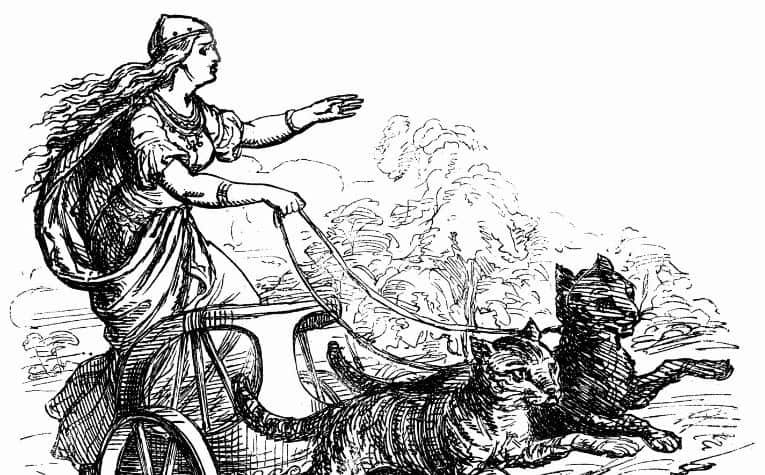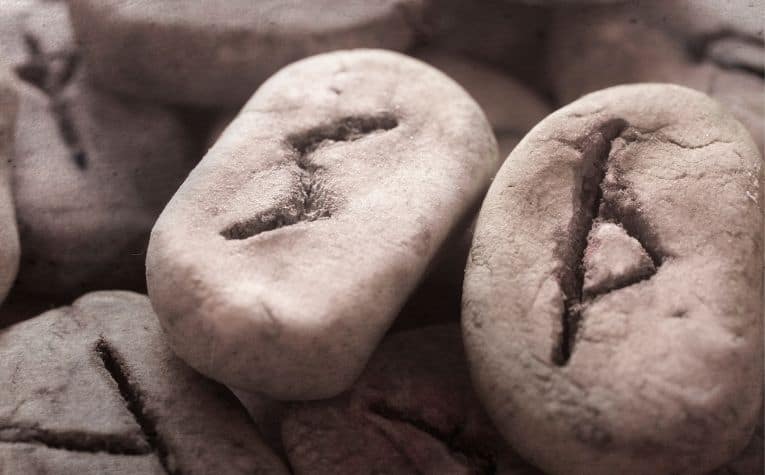Odin, Thor, and Freya are central to Norse paganism, the body of spiritual beliefs that form Scandinavia’s old religion.
And just like the resurgence of all things Viking in today’s pop culture, Norse religion is itself experiencing a major revival in the spiritual realm.
Depending on the particular branch of Norse religion, rites or ceremonies by which one is officially inducted into the Norse religion are largely informal.
Conversion is open to any person who openly embraces their core beliefs. However, there are specific groups that appear to restrict membership.
Odin, Thor, and Freya are revered and worshiped in much the same manner as they were centuries ago when the Vikings were at the height of their power and influence in Northern Europe and beyond.
Not much has changed in the way they are worshiped, and that is the whole idea.
Goddesses are important to Norse mythology. See 10 Goddesses in Norse Mythology to learn more.

Norse Religion in the 21st Century
The spread of Christianity throughout Scandinavia toward the end of the Viking Age was a sign (but not necessarily the cause) of the Norse warrior society’s diminishing hold over Northern Europe.
But the Norse people did not completely abandon the worship of their pagan gods, as many of them quietly and discretely continued their polytheistic ways under the cloak of Christianity.
Today, a growing number of people throughout modern-day Scandinavia, Northern Europe (including Iceland), the United Kingdom, and even the United States are openly embracing and reviving the old Norse religion’s core virtues and beliefs.
The Tree of Life is an important Norse symbol. See The Norse Tree of Life: A Fascinating Viking Symbol to learn more.
Branches of the Norse religion
As it is known and practiced today, followers refer to their particular version or branch of Norse religion in various ways, the most common of which are:
- Forn Sidr – centuries ago, Scandinavians did not have a formal name for their polytheistic beliefs. As Christianity (the “new way”) began its slow spread through the region, Norse religion was referred to as Forn Sidr or the “old way.”
- Norse paganism and neopaganism – since the birth of Christianity, nonbelievers have collectively been referred to as pagans and, more often than not, with negative connotations. Paganism simply refers to any religion other than the big three (Christianity, Judaism, Islam). And specifically, any belief system that pre-dates the Christian faith.
- Heathenry – many modern Norse religion practitioners prefer to call themselves heathens, and their religious practice heathenry in homage to the polytheistic belief system that had been in place in Scandinavia for centuries before the first Christian missionaries arrived.
- Asatru (also known as asatro) – this religious movement began in Iceland in 1972, intending to revitalize the forgotten ways of old Germanic paganism. Followers of Asatru are known as Asatruar and take a reconstructionist approach toward resurrecting pre-Christian Norse spiritualism, relying upon old poems and sagas for spiritual guidance.
This is the most prominent form of modern Norse religion around the globe today. [1] [2]
Freyja is an important figure in the Norse worldview. See Freyja: Goddess of Love, Witchcraft, and War to learn more.

Joining a Norse Religious Group
Before the arrival of Christianity in Scandinavia, Norse paganism was a religion that was richly steeped in customs and ceremonies but not reliant on written scriptures or rigid dogma like the world’s major religions.
Nor was any type of hierarchy or power structure strictly enforced.
Similarly, today’s practice of Norse religion revolves around core ideologies like polytheism and ancestor reverence, without hard and fast rules regulating how things are to be done.
Although some form of spiritual leadership leads local chapters, they share the common characteristics of being relatively unstructured (but not disorganized), de-centralized, and non-authoritarian.
For the most part, formal induction into a Norse religious group (commonly referred to as kindreds or hearths) is best exemplified by the Asatru method, consisting of the following:
- In the presence of a godi (priest) or gydja (priestess) and the local kindred, the new member affirms their devotion to, and solidarity with, the Norse gods of Asgard comprising the Aesir and Vanir
- The new member proclaims allegiance to the Asatru way of life and disclaims all other religious faiths
- These affirmations are usually made on some type of sacred object, such as an oath ring
Unlike other major religions of the world, followers of the Norse religion are under no obligation to spread their gospel and “save” or convert others.
In fact, Asatruars openly acknowledge that theirs is not a universal faith or a religion suitable for everyone.
It is worth noting that certain kindreds, especially within the Asatru, believe that their congregation should include only those of Norse or European ancestry. [3]
Also, see 25 Gods to Know in Norse Mythology to learn more.
The Fundamental Beliefs of Norse Religion Today
No matter the particular form of Norse religion, whether it be heathenry, Asatru, Odinism, neopaganism, or Forn Sidr, they all share the same fundamental beliefs at their core. (Also see What’s the Difference Between Norse, Nordic, and Norwegian)
Although the nuances of modern Norse religion may differ from one part of the world to another or from one kindred to the next, these are the basic spiritual elements:
Polytheism
Perhaps the signature aspect of Norse religion, past and present, is the belief in a large pantheon of gods and goddesses.
Each deity has dominion over certain aspects of life and is an enigmatic figure with numerous traits, talents, and even flaws.
The relationship between followers of the Norse religion and their gods is complex, in many ways mimicking real-world interactions between people.
This includes the notion of reciprocity, which basically entails returning the favor upon receipt of an act of kindness or respect.
Thus, a toast or offering to a god or goddess should be reciprocated with the granting of a wish or favor.
Symbols are important in Norse mythology. See What Is the Meaning of Odin’s Horn? to learn more.
Ancestor Reverence
Norse religion teaches that ancestors are to be memorialized and commemorated but not worshipped as one would toward a god or deity.
One need not even pay homage to a blood relation, but any person whose achievements or stature are worthy of remembrance.
De-centralization
One of the signature attributes of Norse religion is its lack of rigid, inflexible structure.
Unlike the Catholic Church, for instance, there is no religious leadership network answering to a single authority figure, nor is there even a singular organization to which local chapters belong.
Ceremonies and Rites
Centuries ago, the blot played a central role in Norse religious practice. This tradition continues today as blots are held to commemorate and celebrate special events like weddings and holidays.
Where animal sacrifice was an important aspect of blots during the Viking Age, today, the offering and sharing of food and drink have taken their place.
Also, see Is Norse Religion Older Thank Judaism? to learn more.
Wyrd
One of Norse religion’s primary teachings is the concept of Wyrd, which holds that everything in the universe is interconnected.
Thus, the actions (or inactions) of a single person have the potential to impact that person’s life and the lives of others.
Fridh
Another ideological pillar of Norse religion then and now is the concept of Fridh, which refers to the sense of community, kinship, and hospitality, that all people should share with each other. The concept of reciprocity again figures prominently here. [4] [5]
Also, see Yggdrasil: The Sacred Ash Tree of Norse Mythology to learn more.
Modern Worship of Norse Gods and Goddesses
Norse religion teaches that its gods and goddesses are not entities to be worshiped and revered as much as they are to be embraced as respected peers.
Existing within a polytheistic belief system, certain Norse gods and goddesses play a greater role in different individuals’ personal lives depending on life circumstances.
Here are some examples of how individual gods and goddesses may be honored:
- To seek prosperity in the form of a bountiful harvest, one may raise a glass to the gods of fertility, Njord and Frej
- When confronted with a difficult situation, one would solicit strength from Thor
- A toast to the goddess Freyja may coincide with the search for true love or starting a family
- When seeking elusive answers to one of life’s challenging moments, one need look no further than the all-father Odin for wisdom and enlightenment [6]
Conclusion
Norse pagan beliefs pre-date the arrival of Christianity in Scandinavia, and now, many centuries later, the old Norse religion is going through a major revival.
References:
[1] Source
[2] Source
[3] Source
[4] Source
[5] Source
[6] Source
